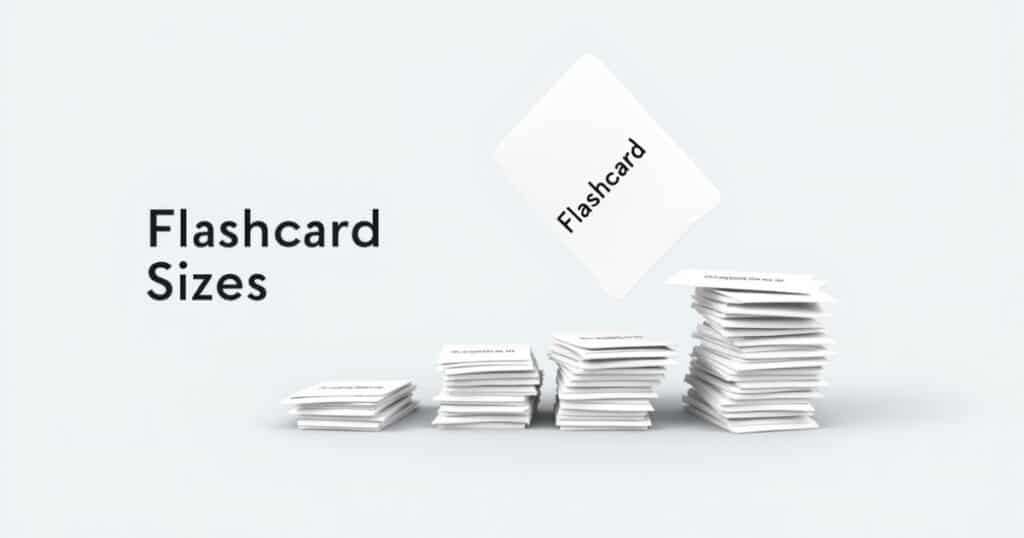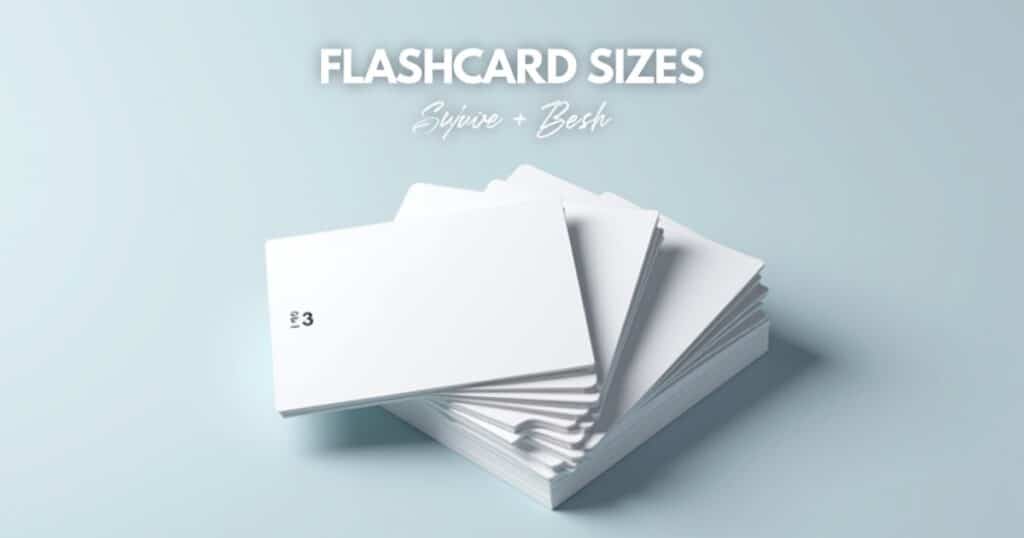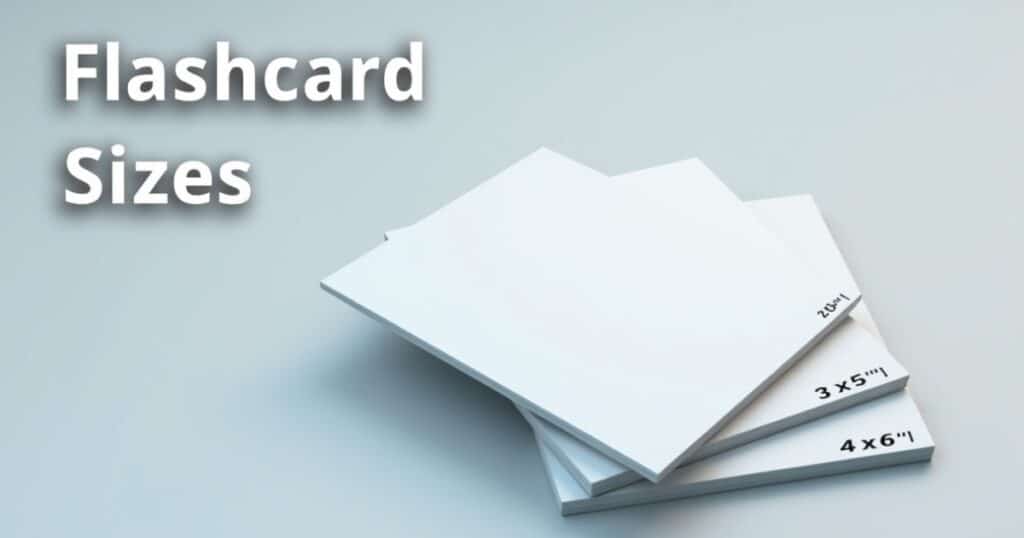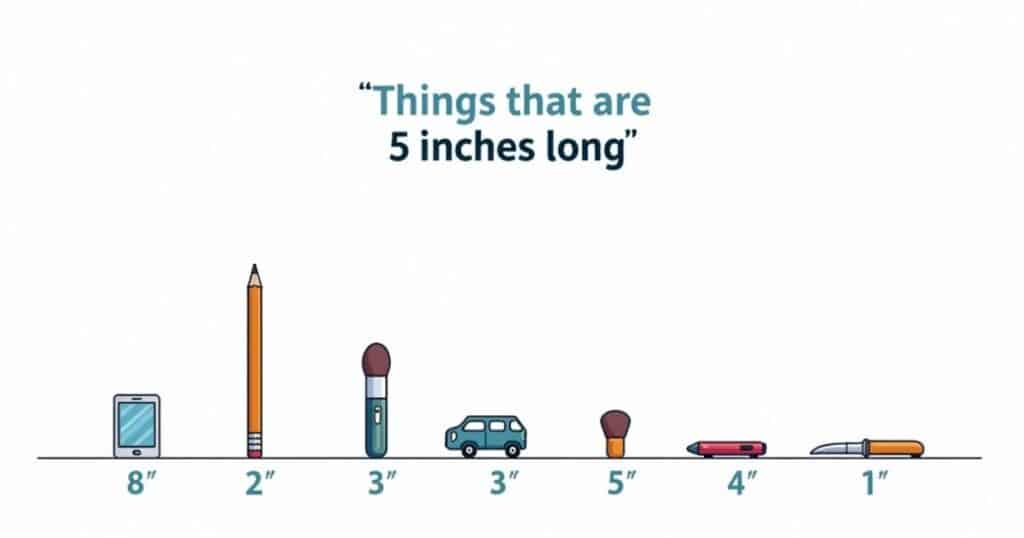Have you ever grabbed a stack of flashcards to study vocabulary or prepare for an exam, but wondered if you had the right size for your needs? Flashcards might seem simple, but their dimensions actually matter more than you’d think!
From pocket-sized cards for on-the-go studying to oversized versions for classroom demonstrations, the world of flashcards is surprisingly diverse.
Whether you’re a student cramming for finals, a teacher preparing visual aids, or a language learner building your vocabulary, understanding flashcard sizes can make your learning process more effective and convenient. Let’s dive into this often-overlooked aspect of one of education’s most enduring tools.
How Big Are Standard Flashcards?
Standard flashcards typically measure 3×5 inches (7.6×12.7 cm) or 4×6 inches (10.2×15.2 cm). These dimensions have become the go-to sizes because they strike a perfect balance large enough to write clearly on but small enough to carry around easily.
You’ll find these familiar rectangles in students’ backpacks and teachers’ desks worldwide, recognized instantly as tools for memorization and quick review.
Common Flashcard Sizes and Their Uses
Index Card Size (3×5 inches)
The classic 3×5 inch flashcard remains the most popular size for good reason. These compact cards fit comfortably in your hand and slide easily into pockets, purses, or small storage boxes.
Students typically reach for this size when studying vocabulary, mathematical formulas, or historical dates. The relatively small surface area encourages concise note-taking and forces you to distill complex concepts into digestible chunks a process that actually enhances memory retention.
I’ve found these particularly useful for language learning, where you might write a foreign word on one side and its translation on the other. Their portability means you can review them during short breaks throughout the day, making use of those precious “in-between” moments.
A fascinating piece of trivia: this size originated from library index cards in the late 19th century. When librarians standardized their cataloging system, they inadvertently created what would become the perfect studying tool for generations to come.
Study Card Size (4×6 inches)
When you need a bit more space but still want something portable, 4×6 inch flashcards deliver the perfect middle ground. These cards offer about 60% more writing area than their 3×5 counterparts enough space for more detailed notes, small diagrams, or additional context.
Medical and law students often prefer this size for complex topics that can’t be condensed to just a few words. The extra room allows for explanatory sentences, bullet points, or even simple illustrations that help clarify difficult concepts.
These cards still fit in most storage boxes and organizer rings, though they might be too large for some pockets. They’re ideal for home study sessions where you can spread them out on a desk or table.
Did you know? Research suggests that adding visual elements to your flashcards can improve recall by up to 65%. The extra space on 4×6 cards makes this visual learning approach much more feasible.

Mini Flashcards (2×3 inches)
Don’t underestimate these tiny powerhouses! Mini flashcards measuring just 2×3 inches might seem too small at first glance, but they serve specific purposes brilliantly.
These pocket-sized cards excel at single-word vocabulary or simple concepts. Their extreme portability makes them perfect for studying on crowded public transit or during short waiting periods throughout your day. Many language learners keep a small stack in their wallet or phone case for impromptu practice sessions.
Teachers use mini flashcards for quick warm-up activities or games where students might need to hold multiple cards at once. They’re also popular for teaching young children, whose smaller hands can manipulate these cards more easily.
The unexpected advantage of mini flashcards lies in their limitations you simply can’t fit much information on them. This constraint forces ultra-concise thinking, which cognitive scientists have linked to stronger memory formation and recall.
Large Flashcards (5×8 inches)
When standard sizes won’t cut it, 5×8 inch flashcards offer generous writing space for complex topics. These larger cards provide room for detailed notes, multilevel questions, or comprehensive diagrams.
Teachers commonly use this size for classroom demonstrations, as they’re visible from a distance when held up. They work wonderfully for math problems where you need to show multiple steps, or for language learning where you might include a word, its translation, pronunciation guide, and example sentences all on one card.
The downside? Their size makes them less portable and more awkward to shuffle through quickly. They’re better suited for dedicated study sessions at a desk rather than on-the-go reviewing.
Many students use these larger cards selectively for their most challenging topics, where additional context and details make a difference in understanding core concepts.
Digital Flashcards (Variable Sizes)
In today’s tech-driven world, digital flashcards have revolutionized studying. Apps like Anki, Quizlet, and Brainscape offer virtual flashcards in various formats and sizes, adapting to whatever device you’re using.
The beauty of digital options lies in their flexibility. You can include images, audio clips, and even videos on digital flashcards something impossible with paper versions. Many apps also employ spaced repetition algorithms, showing you cards at scientifically optimized intervals to maximize retention.
For environmental considerations, digital flashcards eliminate paper waste. They’re also practically unlimited in quantity no more running out of cards mid-study session!
However, research suggests that the physical act of writing information by hand on traditional flashcards may improve memory formation compared to typing. Many students find a hybrid approach works best: digital for convenience and tracking progress, physical for initial learning and deeper processing.
See Also: Things that Are 3 Meters Long – Size of Common Objects
Specialized Flashcard Formats
Ringed Flashcards
These clever cards feature a hole punched in one corner, allowing them to be bound together with a metal ring or carabiner. This simple innovation prevents the common frustration of dropping your carefully ordered stack of cards!
The ringed design keeps your flashcards organized in a specific sequence ideal for chronological information like historical events or step-by-step processes. You can flip through them like a tiny book, studying one card at a time without shuffling or mixing them up.
Most commonly found in 3×5 and 4×6 sizes, ringed flashcards work particularly well for sequential learning where order matters. Language learners use them to group vocabulary by themes, while science students might organize cards by related concepts.
Two-Sided Color-Coded Flashcards
Taking visual organization to the next level, these flashcards feature different colors on each side or use color coding along the edges. This visual distinction helps trigger memory associations and makes it easier to sort cards into categories.
Many commercial versions use white on one side and a bright color on the other, instantly showing you which side contains the question and which has the answer. Others use different colored borders to indicate difficulty levels or subject categories.
Psychology research has demonstrated that color can enhance memory and recall. By associating information with specific colors, you create additional mental pathways to retrieve that knowledge later.

Practical Applications of Different Flashcard Sizes
Academic Studying
In educational settings, flashcard size often correlates with subject complexity:
- 3×5 cards work well for vocabulary, definitions, and straightforward concepts
- 4×6 cards suit mid-level complexity with room for examples and context
- 5×8 cards accommodate complex theories, diagrams, or multi-part processes
Many students develop personalized systems, using different sizes for different courses or varying sizes within a subject based on the complexity of specific topics.
Language Learning
Language learners have unique considerations when selecting flashcard sizes:
- Mini cards excel for individual vocabulary words
- Standard sizes work well for phrases and example sentences
- Larger cards accommodate grammar rules with multiple examples
The portability factor matters significantly for language acquisition, as consistent, spaced repetition throughout the day accelerates learning. Many polyglots carry small stacks everywhere they go, turning idle moments into productive study time.
Professional Training
Beyond academia, flashcards have found their way into professional training across various industries:
- Medical students use larger cards for anatomy diagrams and treatment protocols
- Law students rely on standard sizes for case briefs and legal principles
- Business professionals use flashcards for presentation preparation and memorizing key statistics
In corporate environments, teams sometimes use oversized flashcards during brainstorming sessions or for visual organization of project components.
How to Choose the Right Flashcard Size
Selecting the optimal flashcard size depends on several factors:
- Content complexity: More complex information requires larger cards
- Portability needs: Frequent on-the-go studying calls for smaller sizes
- Writing space requirements: Detailed diagrams need generous dimensions
- Study environment: Classroom use may require larger, more visible cards
- Personal preference: Your comfort with handling different sizes matters
Don’t be afraid to mix sizes based on your specific needs! Many effective studiers maintain different sets for different purposes small cards for quick reviews during short breaks and larger ones for in-depth study sessions.
See Also: Shampoo Bottle Sizes: Understanding Their Variety and Practical Impact
DIY Measurement Tips for Making Flashcards
If you’re creating your own flashcards from scratch, here are some handy measurement references:
- A standard index card (3×5 inches) is about the size of a smartphone
- A 4×6 card closely matches the dimensions of a standard photograph
- Mini flashcards (2×3) are similar to business cards
- Large flashcards (5×8) approximate the size of a medium paperback book page
When cutting your own cards, consider using:
- A paper cutter for precise, straight edges
- Pre-measured templates you can download and print
- The grid lines on cutting mats for accurate measurements without a ruler
For perfect consistency, start with pre-cut index cards available at most office supply stores. These come in standardized sizes and save considerable preparation time.
The Psychology Behind Flashcard Dimensions
The size of your flashcards affects more than just convenience it influences how you learn. Cognitive research suggests smaller cards may enhance concentration by limiting the amount of information presented at once, reducing cognitive overload.
Conversely, larger cards allow for context and connections between related concepts, which can deepen understanding rather than just memorization. The physical act of handling differently sized cards also creates kinesthetic memory cues that can enhance recall.
Dr. Barbara Oakley, author of “Learning How to Learn,” suggests that varying study materials’ physical characteristics (including size) can create more neural pathways to the same information, making it easier to retrieve later.
Conclusion
While flashcards might seem like a simple study tool, their dimensions play a surprising role in learning effectiveness. From pocket-sized vocabulary builders to comprehensive study aids, each size offers distinct advantages for different learning situations.
The best approach often combines various sizes based on your subject matter, study environment, and personal preferences. By thoughtfully selecting the right flashcard dimensions for each learning task, you can optimize both convenience and cognitive processing.
Next time you reach for flashcards to tackle a new subject, consider how their physical dimensions might enhance your learning experience. And look around your home or classroom you might be surprised by how many different flashcard sizes you can find already in use!
Whether you’re a student, teacher, or lifelong learner, understanding these seemingly simple tools’ nuances can transform your educational experience. After all, when it comes to effective learning tools, sometimes size really does matter.
Read more knowledgeable blogs on Measure Take.



